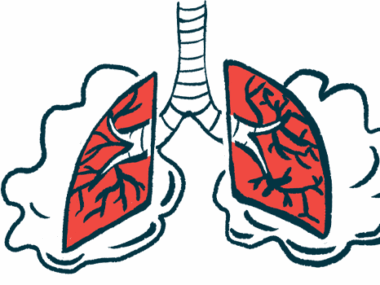New AAV treament guidelines in UK recommend rituximab use
List of 26 points also sets 2-4 years maintenance therapy period after remission
Written by |

Updated treatment guidelines from the British Society for Rheumatology favor rituximab over cyclophosphamide for active, relapsing ANCA-associated vasculitis (AAV), and set a standard maintenance treatment period of about 2-4 years after the disease has entered remission, or is determined to be well controlled.
These recommendations are part of a list of more than two dozen points covering five domains — from managing the disease and setting up specialist care services to supporting and educating patients.
The revised treatment guidelines now cover AAV patients of all ages, with special attention to children and adolescents, and their transition to adult care. The updates build on 2014 recommendations for the management of care for adults with AAV.
“Updating the guideline [was] required to reflect important changes incorporating new studies and trials describing significant advances in treatment and new therapies” in AAV, the authors wrote. “The 2014 guideline no longer reflects current best practice and does not reflect all the available high-quality evidence that underpins management of AAV.”
An overview of the updated recommendations can be found in “Executive summary: The 2025 British Society for Rheumatology management recommendations for ANCA-associated vasculitis,” which was published in the journal Rheumatology by a society steering group.
Original treatment guidelines, set in 2014, were now outdated
AAV causes inflammation in blood vessels and can affect any part of the body, though organs such as the kidneys and the lungs are most commonly impacted. There are three main types of AAV: granulomatosis with polyangiitis, or GPA, microscopic polyangiitis, known as MPA, and eosinophilic granulomatosis with polyangiitis, called EGPA.
It’s now been more than a decade since the British Society for Rheumatology released its first guidelines for managing AAV in adults in 2014. Over those years, many advances were made in how the disease is treated, meaning an update based on recent evidence was needed.
To do this, a group of experts was brought together to review clinical data and international guidelines. The result of this work was a list of 26 recommendations for managing GPA, MPA, and EGPA, as well as ear, nose, and throat complications of GPA; setting up specialist care services; and supporting and educating patients.
“The 2014 guidelines … really set the scene and were a real advance for the management of disease, but they’re outdated, they don’t reflect what’s best practice now,” Lorraine Harper, PhD, a professor at the University of Birmingham in the U.K., who chaired the working group, said in an episode of the “Talking Rheumatology” podcast.
Rituximab now favored over cyclophosphamide
Among patients, active GPA or MPA should be treated quickly because the disease can threaten the body’s organs or even life. Induction treatment, to bring disease into remission, usually starts with immunosuppressants combined with corticosteroids or Tavneos (avacopan), an approved medication for those two types of AAV.
While both rituximab and cyclophosphamide are recommended for inducing remission, rituximab is preferred for relapsing AAV — when disease that has been previously well controlled has become active. For less severe disease, other immunosuppressants such as methotrexate may be used.
While corticosteroids are commonly used to control inflammation, these medications can cause serious side effects when used at high doses or for long periods of time. According to the recommendations, doses should be tapered over time and adjusted depending on how severe the disease is. Tavneos may help reduce the use of corticosteroids, a recent report suggested.
To keep the disease under control after induction treatment, both rituximab and cyclophosphamide can be used, but rituximab — given every 4–6 months — is preferred. Maintenance usually lasts 2-4 years. Among other treatment options are azathioprine and methotrexate; mycophenolate mofetil also can be prescribed when medications can’t be used.
Patients who have breathing symptoms like shortness of breath or noisy breathing due to GPA should be seen by an ear, nose, and throat or lung specialist, the guidelines suggest. When GPA affects the nose or the sinuses, which are the air-filled cavities behind the nose, it’s important to ask about past or current cocaine use, as it can cause similar symptoms, the recommendations note.
In cases of severe ear, nose, and throat symptoms, first-line treatment typically involves rituximab or cyclophosphamide with corticosteroids or Tavneos. Antibiotics may be needed for infections. If surgery is needed, the disease should be in remission for at least 12 months, and corticosteroids should be used in low doses, per the guidelines.
Recommendations urge specialist care services for patients
While diagnosing EGPA can be difficult, all patients with active disease should be treated as if it is organ- or life-threatening, the guidelines note. Induction treatment involves corticosteroids plus other medications like cyclophosphamide or rituximab. For milder cases, anti-IL-5/IL-5R medications or methotrexate can be used. These therapies can also help maintain remission and reduce corticosteroids.
People with suspected AAV should be seen by a specialist within seven days, and hospitals should be able to give intravenous (into-the-vein) treatment for newly diagnosed or relapsing disease, also within seven days. Patients should be seen in dedicated clinics where they are grouped together, not general clinics, per the guidelines.
These recommendations, in five key domains, provide a framework for all healthcare professionals involved in caring for patients with AAV to provide evidence-based, good-quality care across the life course.
Care should be well coordinated across specialties, with team-based clinics as the ideal setup. Nurses with specialist knowledge of vasculitis should help manage care, including nurse-led clinics and smooth transitions from pediatric to adult services.
“We know that specialist nurses are really good at providing patient education on their disease — what to expect, and what the outcomes might be, what the treatment is going to be like for them, whether they’re starting cyclophosphamide or rituximab,” Georgina Ducker, a specialist nurse who was part of the working group, said in the podcast. “It’s about giving that additional education and support.”
Everyone with AAV — whether children, adolescents, or adults — as well as their families and carers, should receive clear, personalized information about the disease from someone properly trained or a trusted organization. This should include details about treatment, side effects, and advice on diet and exercise.
“These recommendations, in five key domains, provide a framework for all healthcare professionals involved in caring for patients with AAV to provide evidence-based, good-quality care across the life course,” the working group wrote.







